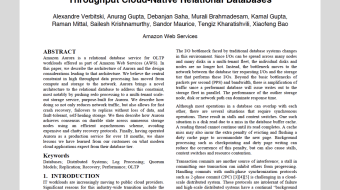Customer-obsessed science


Research areas
-
September 26, 20259 min readTo transform scientific domains, foundation models will require physical-constraint satisfaction, uncertainty quantification, and specialized forecasting techniques that overcome data scarcity while maintaining scientific rigor.
-
-
September 2, 20253 min read
-
-
August 21, 20257 min read
Featured news
-
EMNLP 20232023Generative models have been widely applied to solve extractive tasks, where parts of the input are extracted to form the desired output, and have achieved significant success. For example, in extractive question answering (QA), generative models have constantly yielded state-of-the-art results. In this work, we study the issue of tokenization inconsistency that is commonly neglected in training these models
-
Graph meets LLM: A novel approach to collaborative filtering for robust conversational understandingEMNLP 20232023A Personalized Query Rewriting system aims to reduce defective queries to ensure robust conversational functionality by considering individual user behavior and preferences. It’s usually structured as a search-based system, maintaining a user history index of past successful interactions with the conversational AI. However, this approach encounters challenges when dealing with unseen interactions, which
-
EMNLP 20232023An effective approach to design automated Question Answering (QA) systems is to efficiently retrieve answers from pre-computed databases containing question/answer pairs. One of the main challenges to this design is the lack of training/testing data. Existing resources are limited in size and topics and either do not consider answers (question-question similarity only) or their quality in the annotation
-
FSDM 20232023Adopting AI in financial advisory is a challenging task as there exist multiple sources of information to digest and interpret. Such information consumption processes are very lengthy for financial advisors, reducing the efficiency and timeliness for the advice and recommendation given to their clients. In this work, we introduce a multi-step framework that consumes and combines news and industry-focused
-
ICCV 20232023Semi-supervised semantic segmentation methods use a small amount of clean pixel-level annotations to guide the interpretation of a larger quantity of unlabelled image data. The challenges of providing pixel-accurate annotations at scale mean that the labels are typically noisy, and this contaminates the final results. In this work, we propose an approach that is robust to label noise in the annotated data
Collaborations
View allWhether you're a faculty member or student, there are number of ways you can engage with Amazon.
View all














































